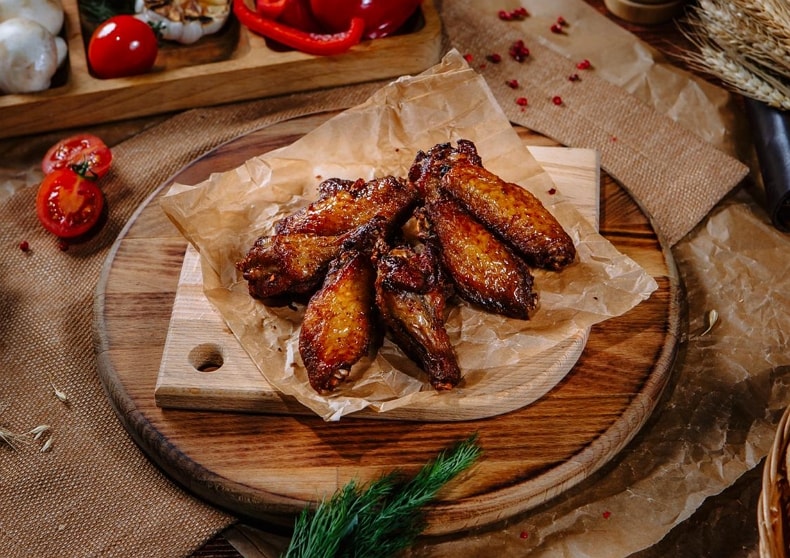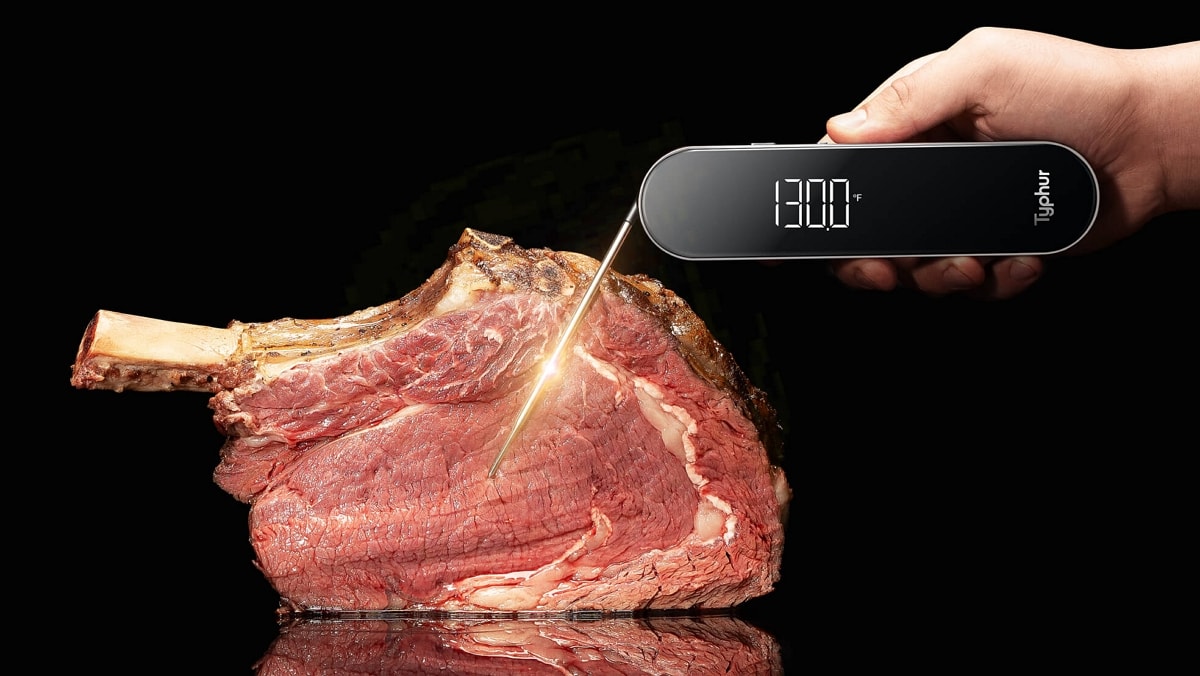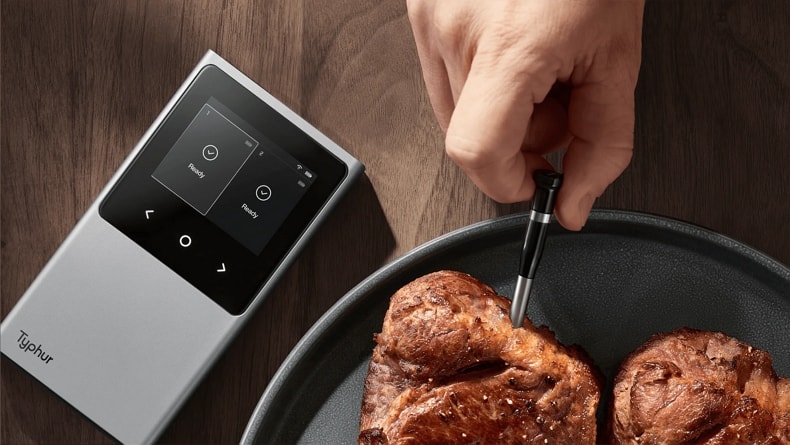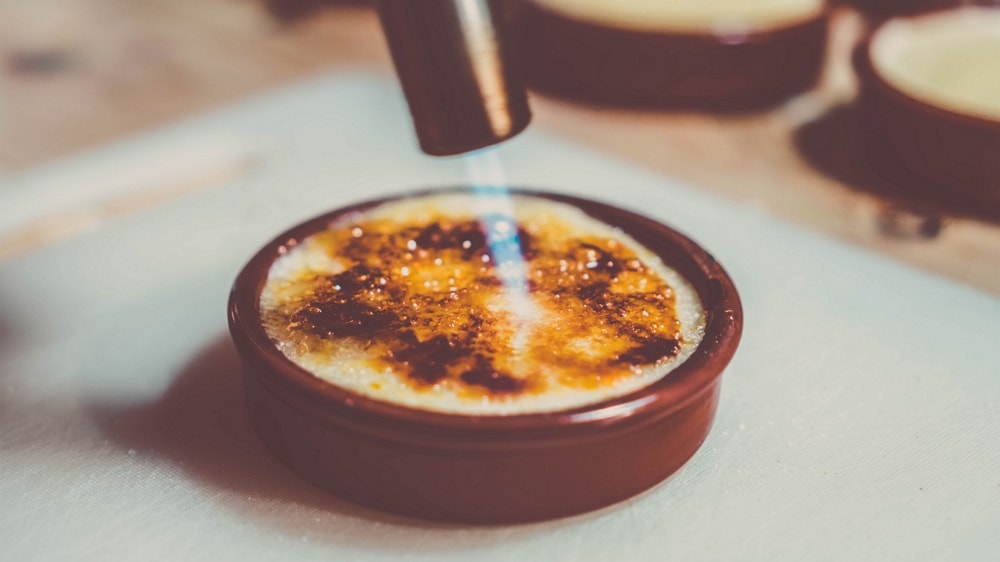
You’re baking a cake or whipping up a dessert, and the rich, sweet aroma of caramel slowly fills the air. The food’s color turns invitingly bright and alluring. Cooking in such an environment is truly a blissful experience. This is the magic of the caramelization process, a culinary wonder that has created countless delicious miracles in our kitchens.
But have you ever wondered what makes sugar so delightfully tasty? What determines the degree and speed of caramelization? How can we easily make delicious caramel? Join us as we dive deep into the secrets of culinary science, revealing the caramelization reaction and its key influencing factors. We’ll guide you in mastering this process in your cooking, enabling you to create supremely delicious caramel treats.
What is Caramelization?
When you’re caramelizing sugar, you might think that the sugar crystals simply melt into a sauce. But in reality, it’s not that straightforward. Instead, sugar undergoes a series of complex chemical reactions known as the “Non-enzymatic browning reaction,” where compounds are thermally decomposed without the involvement of proteins or enzymes.
For common sucrose, the caramelization process involves four main steps. First, there’s sucrose inversion, where sucrose breaks down into two simple sugars: glucose and fructose. Then, as heat increases, the sugars lose water and react with each other, forming a compound known as Difructose-anhydride synthase. This is followed by further dehydration reactions and more chemical interactions between different sugars. Finally, sugar molecules break and polymerize. This process eventually generates three large brown molecules that give caramel its taste, color, and stickiness:
- Caramelan
- Caramelen
- Caramelin
Additionally, this process produces smaller, more volatile molecules that contribute to caramel’s delicious aroma and flavor, including:
- Furans: providing a nutty flavor
- Maltol: contributing a roasted taste
- Ethyl acetate: giving fruity and fragrant notes
- Diacetyl: imparting the signature buttery flavor of caramel
This explains how chefs can transform colorless, tasteless sugar crystals into hundreds of different, novel compounds, creating a multitude of flavors and aromas.
Key to Caramelization: Temperature
Let’s delve into some common kitchen experiences to gain a clearer understanding. Have these scenarios left you feeling curious or baffled?
- Sugar crystallizing during cooking, resulting in a rough, grainy caramel surface.
- Caramel being too bitter or too dark in color.
- Inconsistent caramel results each time you cook.
- Caramel that’s too hard or too soft.
- …
Once you understand the key factor to caramelization – Temperature, these issues won’t hinder your caramel-making. They can be easily resolved.
Why is Temperature So Crucial in Caramelization?
Temperature is the key factor in the caramelization process. As the temperature rises, the caramelization reaction speeds up, creating a richer color and more intense flavor. However, excessively high temperatures can lead to the sugar breaking down too much, resulting in bitterness and undesirable flavors.
The key to making perfect caramel is to precisely control the temperature of the caramelization process. This ensures the caramel turns out just the way we want it in terms of state, flavor, and color, and that the quality of the caramel is consistent every time.
In the table below, we use the caramelization process of sucrose (table sugar) as an example. You can see that at different temperatures, the caramelization process goes through different stages, resulting in varying states, flavors, and colors of caramel.
| Temperature | The state, flavor, and color of caramel |
| 160 ℃ (320 ℉) | Sugar turns into a clear, melted liquid |
| 171 ℃ (340 ℉) | The liquid sugar starts to turn light brown; it becomes brittle when cooled |
| 179 ℃ (355 ℉) | The caramel turns medium brown; it hardens when cooled |
| 185 ℃ (365 ℉) | The caramel becomes dark brown; it is soft and sticky when cooled |
| 210 ℃ (410 ℉) | The caramel turns black and bitter; it is usually used as a coloring agent at this stage |
Furthermore, the caramelization reaction depends on the type of sugar. Different types of sugar have varying temperatures at which caramelization begins.
| Sugar | Caramelization temperatures |
| Fructose | 110° C, 230° F |
| Galactose | 160° C, 320° F |
| Glucose | 160° C, 320° F |
| Lactose | 203° C, 397° F |
| Sucrose | 160° C, 320° F |
How to Check the Temperature of Caramel?
Since temperature is so crucial for caramelization, how do we accurately control the temperature of caramel? We need a precise and quick response thermometer to check the temperature of caramel.
But, what kind of thermometer do you need?
We recommend using the Typhur InstaProbe instant-read thermometer to measure the temperature of the sugar.

Precision, Speed, Elegance
Typhur InstaProbe measures the temperature inside the sugar solution. Thanks to its unique DCTi (Direct Contact Thermocouple Integration) technology and the industry’s first multi-point calibration scheme (7 temperature point calibrations + 1 temperature point verification), it achieves #1 in Reading Speed and Accuracy. It responds very fast (0.5s) and can instantly display the rapid changes in the temperature of the sugar solution during cooking. Its temperature accuracy is ±0.5℉ (±0.3℃), which allows for precise control of every step of the caramelization process.
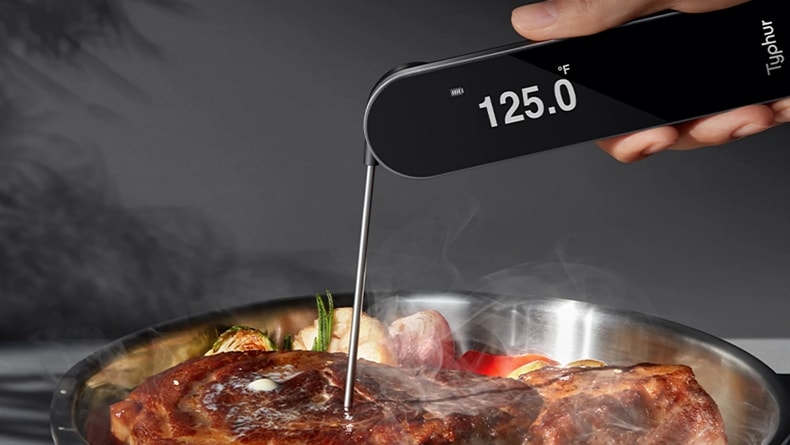
When comparing other types of thermometers, the wired thermometers can be fixed to the edge of cooking utensils for real-time monitoring of sugar temperature, we’ve found that having a wired thermometer in this way creates an area where sugar can stick and crystallize. This can lead to crystallization during cooking and cause the caramel to fail.
And, the infrared thermometer doesn’t interfere with the cooking process like wired thermometers, but they measure the temperature of the surface of the sugar solution, not the inside. Plus, they are not very accurate and can be affected by the surrounding environment, so they’re not the best choice either.
Summing up the above, using the Typhur InstaProbe instant-read thermometer makes the caramelization process super simple, easy, and effortless. This thermometer’s precision and quick response time ensure that you can maintain the exact temperature needed for perfect caramelization, avoiding common issues such as crystallization or burning. This ease of use transforms the art of caramel making from a complex task into a more accessible and enjoyable experience.


